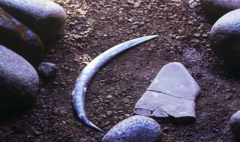The ancient boomerang, discovered in the Oblazowa Cave in southern Poland, has recently been dated to approximately 40,000 years old, much older than the prior belief of around 30,000 years. Crafted from mammoth ivory, this tool demonstrates exceptional craftsmanship, displaying artistry and functional design skills of early Homo sapiens. The recent study published in PLOS One utilized advanced radiocarbon dating techniques on human and animal bones found in the same vicinity, affirming the new age estimates.
Dr. Sahra Talamo from the University of Bologna highlights this find as a milestone in understanding human behavior, particularly showcasing how our ancestors could manufacture sophisticated tools with a clear purpose, likely for hunting. Interestingly, while this boomerang is capable of flight, it does not return to the thrower, contrasting with the common perception of the weapon as popularly portrayed in modern culture.
Well-preserved with distinct score marks, this ancient boomerang was tailored for a right-handed user, suggesting that such personalized crafting was commonplace in the past.
Historically, the boomerang is often associated with Aboriginal culture in Australia, yet evidence of their use spans various continents. Notably, the oldest confirmed boomerang from Australia is approximately 10,500 years old, crafted from wood. Artistic depictions of boomerangs in Aboriginal rock art date back 20,000 years. Other notable finds include a wooden boomerang from Jutland, Denmark, dating back 7,000 years, and an oak boomerang from the Netherlands, about 2,000 years old, which had returning capabilities.
This groundbreaking research involved a collaborative effort among scientists from multiple European countries, demonstrating the global significance of archaeological studies in understanding our shared human past.

















